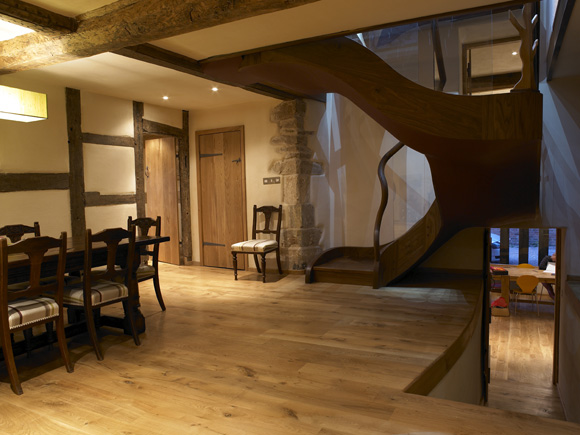English architecture was the last piece of the renaissance era to change, because of this areas physical location. It is isolated from the continent and therefor the renaissance styles of other areas did not have as much of an immediate effect. The climate and available materials had the biggest influence on architectural stylings of this period.
Extra Credit: This website gives a great overall description, more in-depth, of the overall time period.
http://www.uh.edu/~djudkins/life_in_renaissance_england.htm
Since there is so much that took place in this time period, I chose to just breifly highlight two of the smaller periods within it.
Tudor Style
Established by Henry VII, Edward VI, and Mary. There were some issues between the king and the church, so money was not used to build more churches, instead more homes were built and land was given to wealthy merchants and traders. Tudor style is commonly associated with timber framed construction, and this style officially marks the start of the Renaissance. Visible signs of comfort and luxury were included in this style.
Extra Credit: This video shows some great examples of Tudor style homes, most of which are recent applications but they give a great idea of what this style would look like.
https://www.youtube.com/watch?v=bwHrIrrTtS0
 |
| Half-timbering, Gothic Revival tracery and Jacobean carved porch brackets combine in the Tudor Revival Beaney Institute, Canterbury (1899) |
Elizabethan Period
This period took place during the reign of Elizabeth I and James I. It was a period of great wealth and many manors and country homes were built. One of the most well known designers of this time was Inigo Jones, he is known as the man that introduced Renaissance architecture to England. Much of his work relies on Italian architect, Palladio. Among his most famous works are the queens home and the tulip staircase.
 |
| The queen's house |
An interesting fact about this period is that many architectural plans are in the shape of E, C, or H. These also included gateways, long drives and formal gardens and parks on the grounds.
 |
| Floor Plan of the Hatfield House |
Current Day Applications:
 |
| Modern Tudor Home |
 |
| Modern Tudor inspired interior |
 |
| Modern Elizabethan inspired interior with a very interesting staircase |
 |
| Modern spiral staircase, like that of the tulip staircase by Jones. |
Extra Credit: This is a two part documentary by the BBC about the English Renaissance.
No comments:
Post a Comment